Taygeta, designated as 19 Tauri, is a double star located in the zodiacal constellation of Taurus, the celestial bull. The two stars are part of the Pleiades open star cluster.
Key Facts & Summary
- Taygeta is situated at around 440 light-years / 135 parsecs away from the Sun.
- It is among the brightest stars in the Pleiades open cluster.
- The Taygeta star system has an apparent magnitude of 4.30.
- The two main components of Taygeta are 19 Tauri Aa and 19 Tauri Ab.
- 19 Tauri Aa is the primary star, having an apparent magnitude of +4.30.
- It is a blue-white B-type subgiant star of spectral type B6IV.
- The second companion, 19 Tauri Ab, has an apparent magnitude of +6.1, and it is believed to be a B-class star.
- Another star, which is merely a visual companion, much further away than the Pleiades Cluster, is also associated with the Tauri system.
- Sources indicate that 19 Tauri B (the visual companion star) might be a yellow star, yet more massive and larger than our Sun.
- The radial velocity of Taygeta has been estimated to be at 10.1 km / 6.2 mi per second.
- For some time, 19 Tauri has been reported as a variable star, however, it has since been measured to be one of the least variable of stars.
- The primary star, 19 Tauri Aa, has around 4.5 solar masses, and it is around 600 times brighter than our Sun.
- The second star, 19 Tauri Ab, has around 3.5 solar masses, and it is around 150 times brighter than our Sun.
- The zodiacal constellation of Taurus and the Pleiades open cluster are visible enough, that they have been known to the ancients.
- The Pleiades cluster is very bright, though, it cannot be seen during May and June since the Sun blocks our view of the cluster in that period.
The star, Taygeta, is named after one of the seven daughters of the sea-nymph Pleione and the Titan Atlas, from Greek mythology. In the myth, Taygete and her sisters were companions of Artemis, the goddess of the hunt.
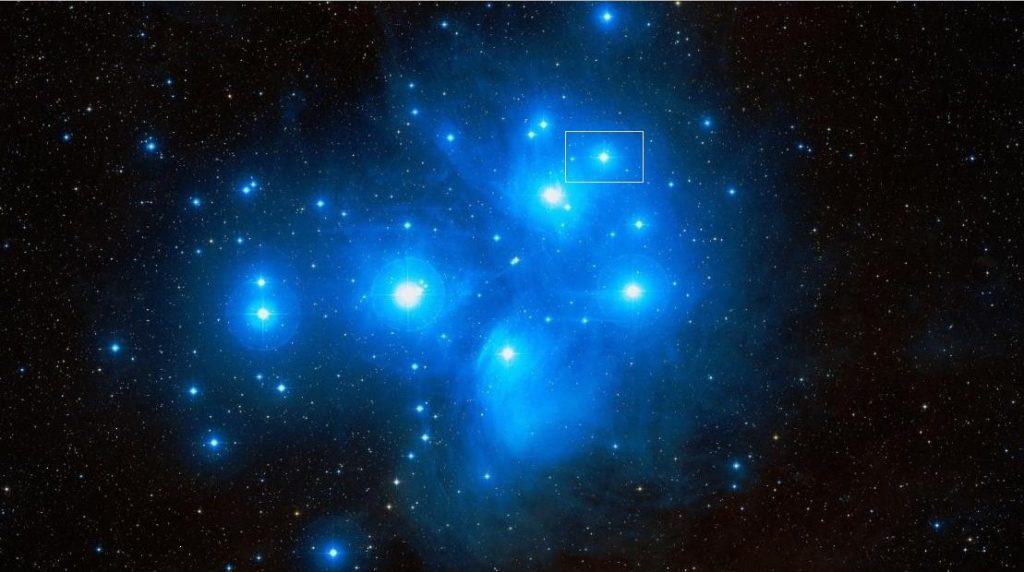
Taygete was pursued by Zeus, the supreme Greek god, yet Taygete asked Artemis for protection. Artemis turned Taygete into a doe with golden horns.
Some sources state that Taygete was the mother of Eurotas, king of Laconia, and of Lacedaemon, the founder of Sparta, by Zeus. In Greek mythos, Eurotas left his kingdom to Lacedaemon, who renamed it after his wife, Sparta.
Formation
Taygeta, along with its neighboring stars in the Pleiades cluster, formed between 75 and 150 million years ago. This open cluster is among the closest star clusters to Earth.
All the stars in the Pleiades cluster have a common origin, they formed through a gigantic molecular cloud of dust and gas. Gravity pulled the swirling gas and dust together and formed the Pleiades cluster.
The Pleiades cluster is overall dominated by very hot blue and luminous stars.
Distance, Size, and Mass
The Taygeta star system is located at around 440 light-years / 135 parsecs away from the Sun. 19 Tauri A has 4.5 solar masses or 450% of the Sun’s mass.
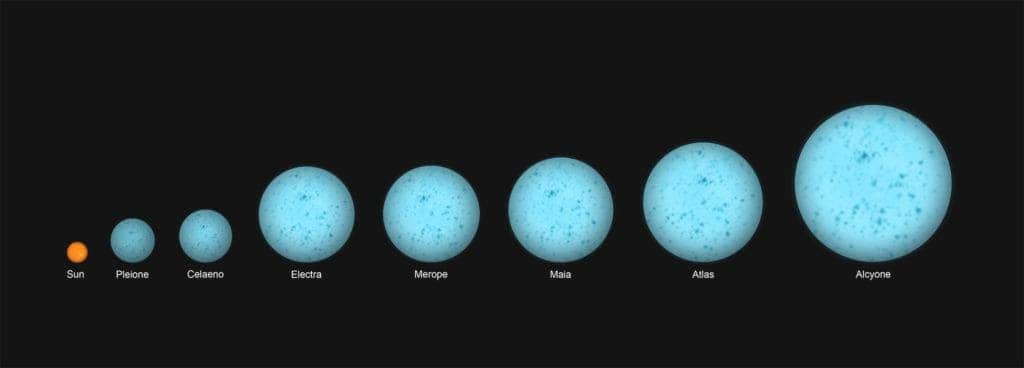
Its companion has 3.2 solar masses or 320% of the Sun’s mass. Other physical characteristics of the stars in this system are currently unknown, however, it is clear that all of them are much bigger than our Sun.
Other Characteristics
The primary star, Taygeta, is a blue-white star of spectral type B6IV, indicating that it has begun to evolve away from the main-sequence. It has surface average temperatures of around 13,400 K, thus it is 2.3 times hotter than our Sun. It has an apparent magnitude of 4.3.
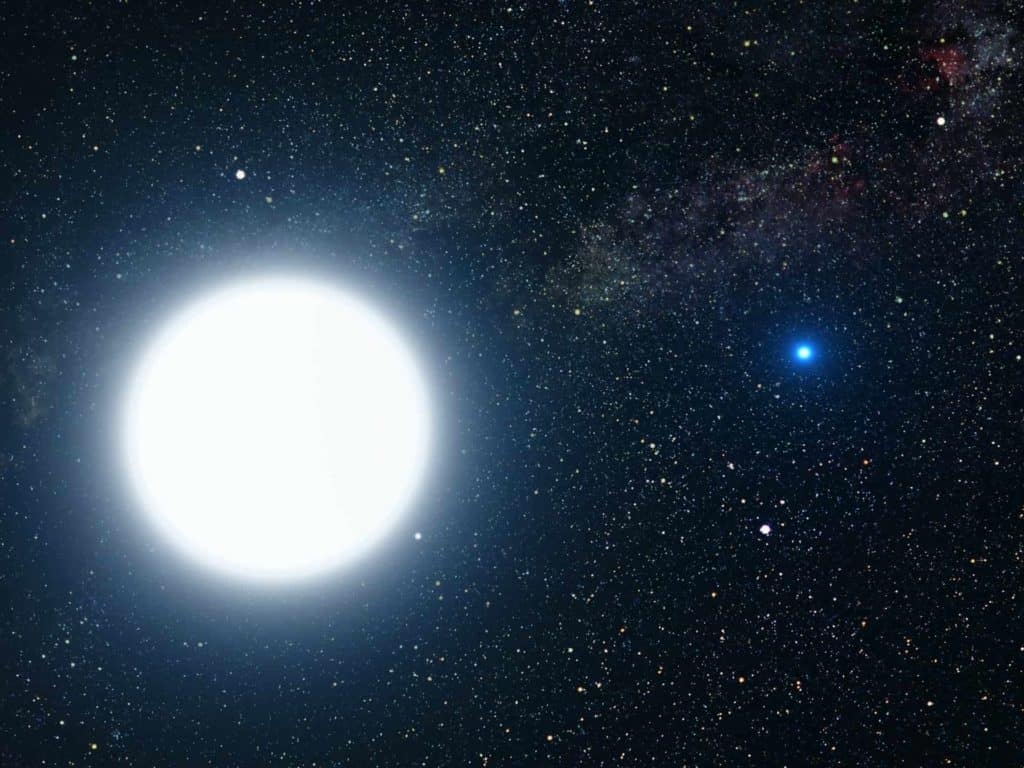
The primary star is also around 600 times brighter than our Sun. The secondary star is believed to be a B-class star, yet much fainter, having an apparent magnitude of 6.1. It is around 150 times brighter than our Sun.
Stellar System
Taygeta is part of a binary star system designated 19 Tauri A. 19 Tauri A, is a spectroscopic binary system whose components are separated by only 0.012 seconds of arc.
The two stars orbit one another every 1,313 days / 3.6 years, with an average separation of 4.6 AU. The binary companions are designated 19 Tauri Aa (formally named Taygeta), and 19 Tauri Ab.
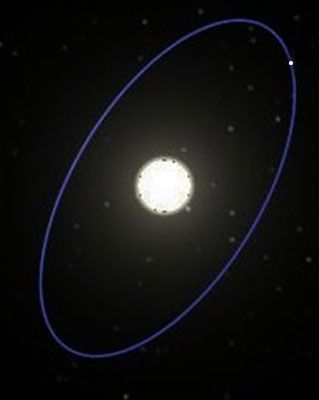
The name Taygeta is traditionally used for the entire system. This binary system also has a visual companion, an 8th magnitude star designated as 19 Tauri B.
It is separated by 69 arcseconds from the main pair, and it isn’t known if it is physically related to the 19 Tauri A system since it lies further away. However, the visual companion is believed to be a yellow star, much bigger than our Sun, and much more massive.
Location
Taygeta is located in the zodiacal constellation of Taurus, the celestial bull. It is among the nine brightest stars of the famous Pleiades open cluster. The Constellation of Taurus is also home to another great open cluster named Hyades.

This constellation is among the largest in the night sky, and also one of the most prominent of the northern constellations occupying an area of 797 square degrees.
The constellation of Taurus, apart from the two mentioned clusters, also has many interesting stars such as Aldebaran, Elnath, and also other fascinating deep-sky objects such as the Crab Nebula, Crystal Ball Nebula, merging galaxies and many more open clusters.
These celestial objects are best observed and studied during January.
Pleiades Member
Taygeta is among the brightest stars of the Pleiades open cluster. From October to April, these stars can be observed and studied, however, May and June are not suitable for observation since the cluster is too close to the Sun.
The Pleiades open cluster is among the closest star clusters to Earth, and one of the brightest in our vicinity. Though the cluster is very bright and easy to find, you may also draw an imaginary line from the stars of Orion’s Belt – Alnitak, Alnilam, and Mintaka – past Aldebaran – and find the cluster.
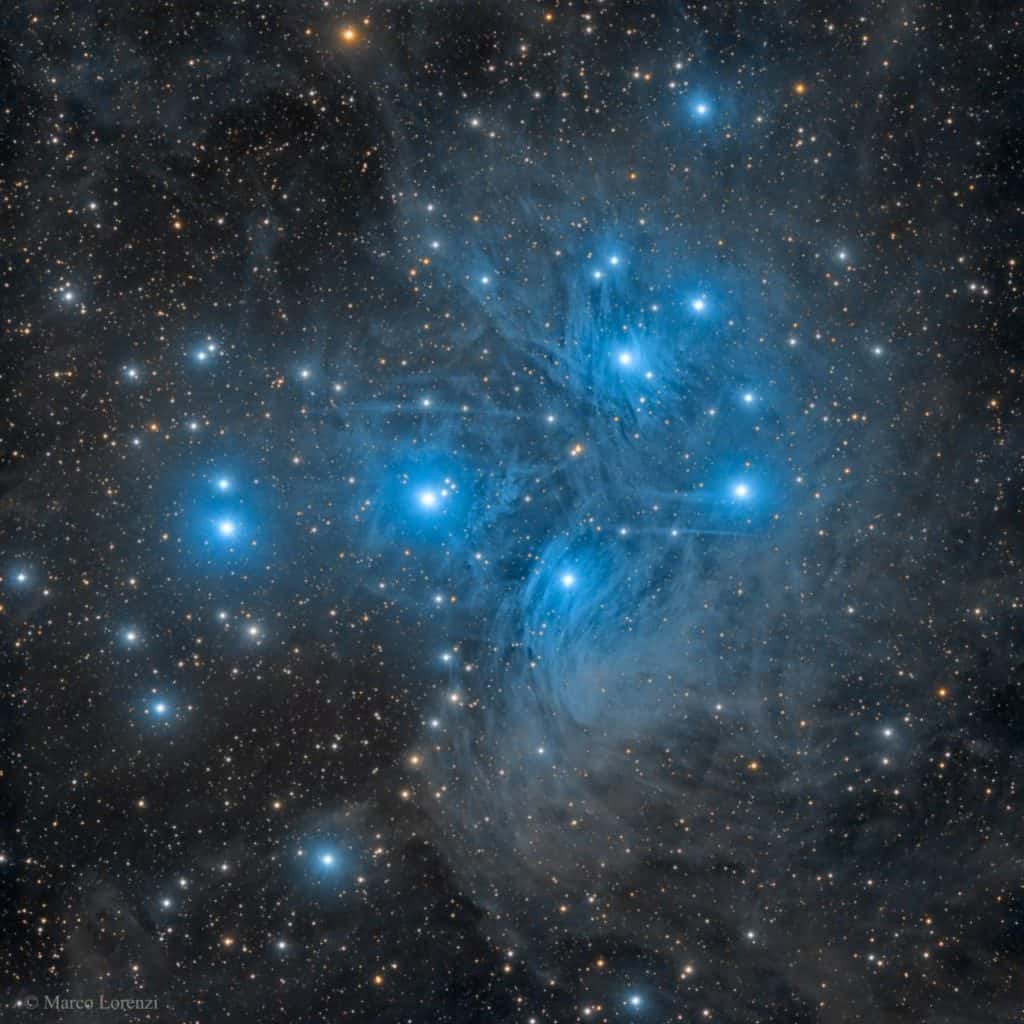
The Pleiades cluster is also known as Messier 45. The majority of the brightest and hottest stars here are of spectral class B, and they formed between 75 and 150 million years ago.
Most of them are far apart from each other, and at around 444 light-years away from us. The most documented and famous stars are all named after the mythological Seven Sisters and their parents from Greek mythology.
The nine stars are Alcyone, Asterope, Atlas, Electra, Celaeno, Maia, Merope, Taygeta, and Pleione. The mythological story depicts the sisters as they caught the eye of Orion, a giant huntsman. Atlas, being condemned for his battles against the gods, was condemned to carry the heavens on his shoulders while Orion, the giant, pursued his daughters.
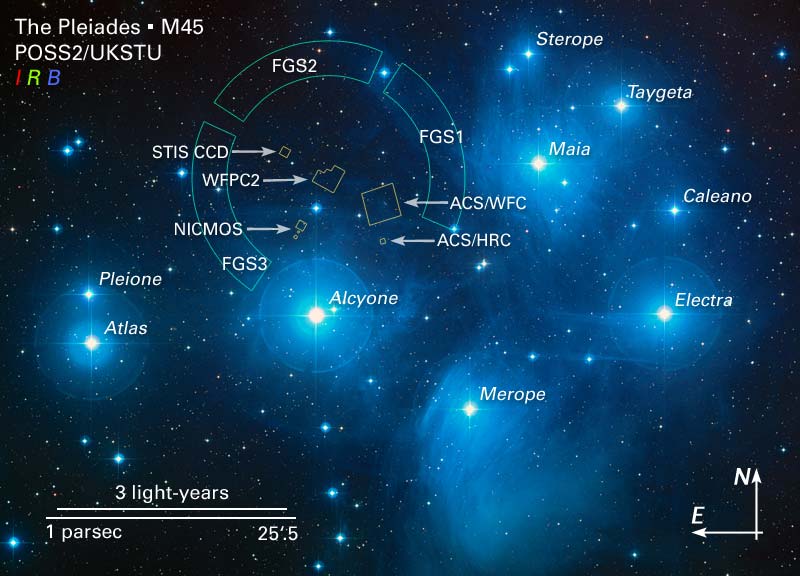
However, the Greek god Zeus stepped in and transformed the sisters into doves, and then into stars to console their father. Even so, Orion, the giant, is still pursuing the Pleiades sisters across the sky, represented by the Orion constellation.
The Future
Taygeta will continue to exist for many millions of years however, the Pleides star cluster has been studied closely and many computer simulations predict a grim future.
Most simulations suggest that the cluster will continue to survive for 250 million years before it will start to disperse due to gravitational interactions with its galactic neighborhood.
Did you know?
- Chinese people know Taygeta as the Second Star of Hairy Head – Hairy Head being an asterism formed by the Pleiades stars Asterope, Atlas, Electra, Maia, Merope, Taygeta, and Alcyone. It is one of the seven mansions of the White Tiger.
- The Pleiades star cluster is believed to have been formed from a compact configuration that resembled the Orion Nebula.
- Many cultures throughout the world knew of the Pleiades cluster since ancient times. One of the earliest depictions of the Pleiades cluster and its stars resides in the Nebra sky disk – a Bronze Age artifact dating to 1.6000 BCE, uncovered in Germany.
- Many famous and ancient texts mention the cluster, such as Homer’s Illiad and Odyssey, Hesiod’s Works and Days, the Bible, the ancient Egyptian Calendar of Lucky and Unlucky Days, and the Japanese Kojiki – An Account of Ancient Matters – the 8th-century chronicle of myths, oral traditions, and legends.
- The Pleiades are mentioned in the Kojiki as the Mutsuraboshi – translating to “six stars.” In modern Japan, the cluster is now known as Subaru – the same name used by the famous automobile company that depicts the six brightest stars in their logo.
- One of the first telescopic observations conducted on the Pleiades was during the 1610s. Galileo Galilei observed the bright stars and the cluster and it is noted that he may well be the first to have done so.
Sources:
Image sources:
- https://www.star-facts.com/wp-content/uploads/2020/01/Taygeta-1109x620.jpg?189db0&189db0
- https://ninespath.com/wp-content/uploads/2019/08/star-67705_1920.jpg
- https://i.pinimg.com/originals/11/01/1c/11011c6399da02c598c863a519d9e528.jpg
- https://www.star-facts.com/wp-content/uploads/2019/10/Taurus-constellation.jpg?189db0&189db0
- https://apod.nasa.gov/apod/image/1909/m45_lorenzi_3832.jpg
- https://en.wikipedia.org/wiki/Pleiades#/media/File:M45map.jpg
